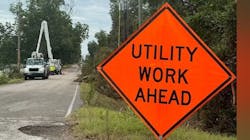CenterPoint Sets $5 Billion Target For Houston Electric Resiliency Plan
CenterPoint Energy Inc. executives on Aug. 28 proposed a plan to, among other things, double the resiliency investments in Houston Electric’s network from 2026 to 2028 as they look to recover from the impacts—infrastructural and reputational—of Hurricane Beryl this summer.
In a letter to Texas lawmakers, many of whom have been critical of CenterPoint’s preparation for and handling of Beryl, President and CEO Jason Wells said his team has nearly completed a list of cleanup, restoration and vegetation management actions outlined immediately after the storm, which executives said could cost the company $1.3 billion. Next up are another series of resiliency projects, scheduled through next spring, focused on hardening, automation and predictive modeling.
In the meantime, the CenterPoint team will work with customer advocates, experts, regulators and other stakeholders to determine how to create “a smart grid of the future that can better withstand a full spectrum of risks.” If approved—Wells said CenterPoint will file its plan by Jan. 31—that $5 billion three-year effort would start in 2026 and double the investments the company’s leaders had previously contemplated for Houston Electric.
“I want to stress again that we have heard the collective calls for urgent action,” Wells wrote. “I see it as my personal mission and responsibility to demand more of ourselves as a company and leadership team.”
In addition to an upsized investment plan, Wells also told legislators that CenterPoint will propose to over time pass up about $110 million in profits from its storm hardening and temporary emergency generation work. That figure would come from two sources: The first is $70 million spent from recent storm hardening work for which Houston Electric will not seek to be reimbursed. The second will come from the utility not filing for about $40 million in expected profits from its temporary emergency generation assets between 2028 and 2032.
Whether the $110 million gesture is enough to placate critics of CenterPoint’s performance during and after Beryl remains to be seen. Both advocacy groups and politicians took aim at the company in part for its inability to deploy mobile generation units on which it spent $800 million—and on which Wells last month told a Texas Senate committee CenterPoint books an annual profit of about $30 million.
In his letter to legislators, Wells said CenterPoint will look to return one of those large mobile generators to Life Cycle Power and invest in growing its fleet of small and mid-sized generators to prioritize covering critical facilities during outages.
The next step in the post-Beryl process for Houston Electric is the building of a detailed workplan for the $5 billion of investment. That proposal will incorporate stakeholder and expert viewpoints and lay out specific actions and timelines for them and Wells said he has set his team a Sept. 30 deadline to build it.
Shares of CenterPoint (Ticker: CNP) closed at $27.20 on Aug. 28, essentially flat from the day before. Over the past six months, they have slipped slightly, leaving the company’s market capitalization at $17.7 billion.
About the Author
Geert De Lombaerde
Senior Editor
A native of Belgium, Geert De Lombaerde has more than two decades of business journalism experience and writes about markets and economic trends for Endeavor Business Media publications T&D World, Healthcare Innovation, IndustryWeek, FleetOwner and Oil & Gas Journal. With a degree in journalism from the University of Missouri, he began his reporting career at the Business Courier in Cincinnati and later was managing editor and editor of the Nashville Business Journal. Most recently, he oversaw the online and print products of the Nashville Post and reported primarily on Middle Tennessee’s finance sector as well as many of its publicly traded companies.
